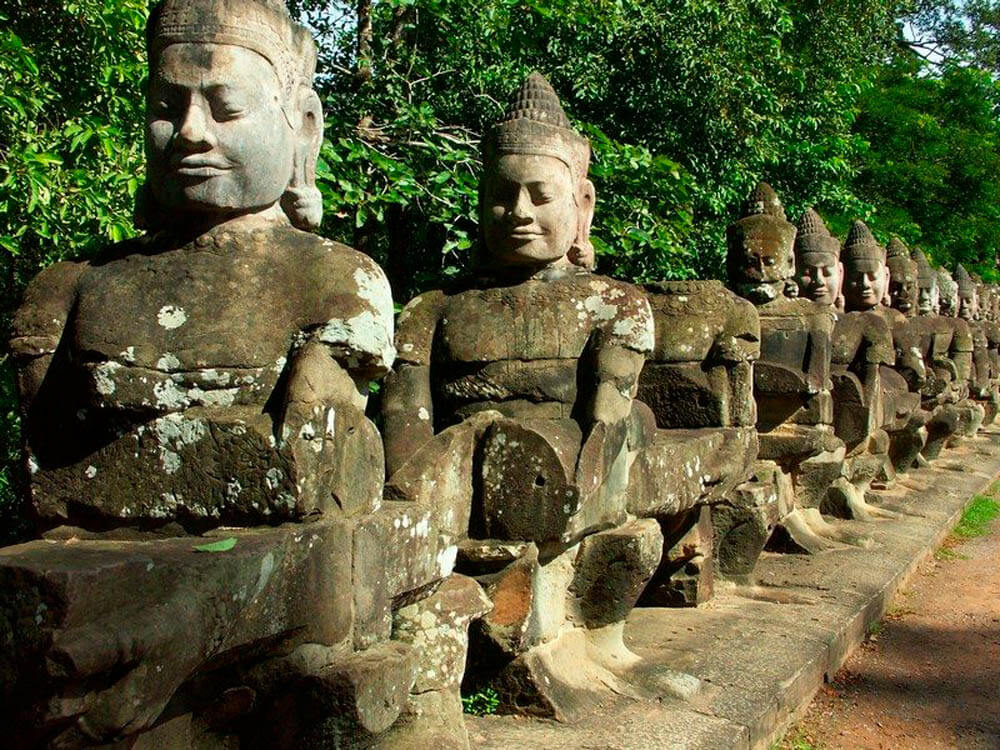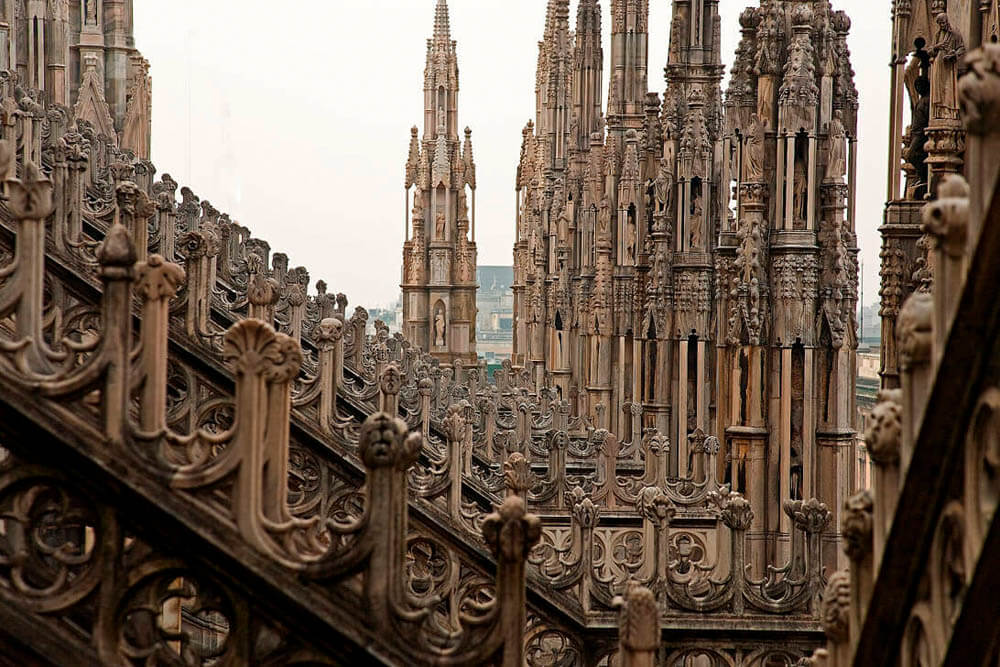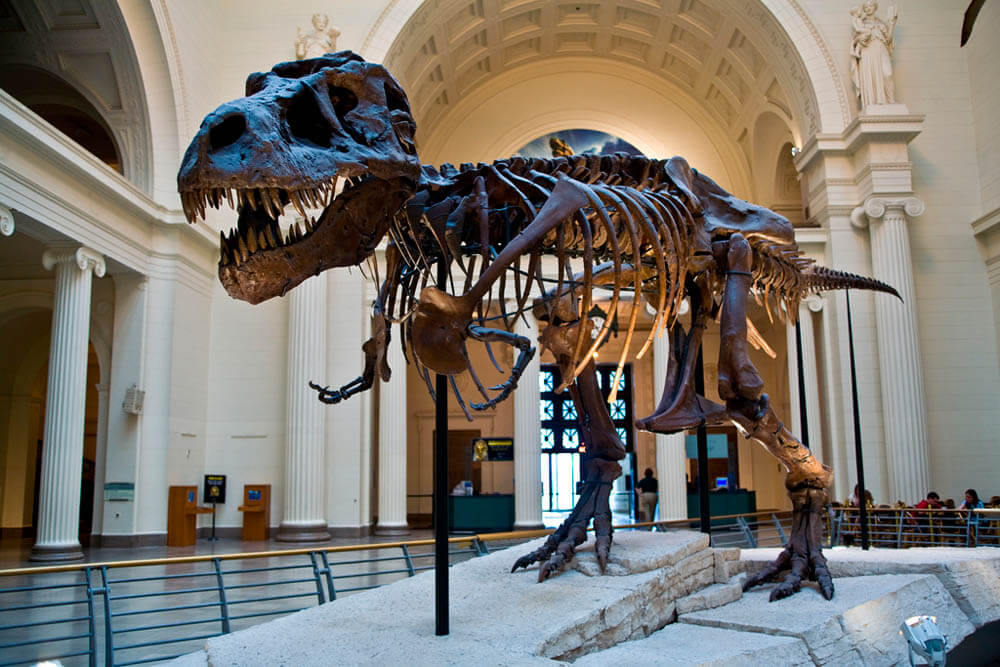More than 8,000 life-sized sculptures of Chinese soldiers (Terracotta Army), randomly found in China, personify the army of the first emperor of China, Qin Shi Huang-di. 2,200 years ago, he united small disparate states and made the Chinese empire and during the Warring States period won battles with other armies.
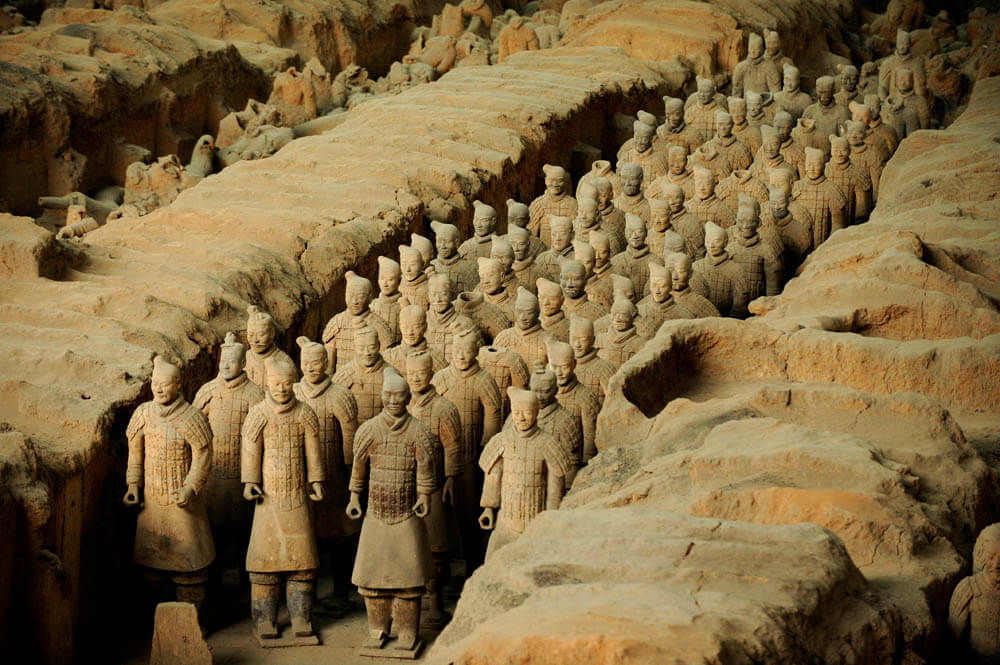
After being enthroned, the 13-year-old Emperor ordered to create an entire army of clay warriors that would be buried with him. Qin wanted to perpetuate the army, which united China and won numerous battles. In addition, the Emperor believed that the soldiers would protect him in the afterlife.
The technique and skills with the help of which the terracotta warriors were molded speak of the high level of professionalism of Chinese sculptors and the development of Chinese art in the third millennium BC. Before the discovery of the army and excavations, it was believed that the golden age of Chinese art fell for the Tang dynasty. So far, scientists still make sensational discoveries at the site of archaeological excavations, but they do not dare to begin researching the tomb itself.
Materials
Experts have confirmed that the material used to create the terracotta warriors and horses is “yellow earth” or reddish clay extracted from around burial sites. Yellow earth could be easily obtained, and it was suitable material for molding sculptures due to its adhesive quality and plasticity. The earth was screened and ground to remove impurities.
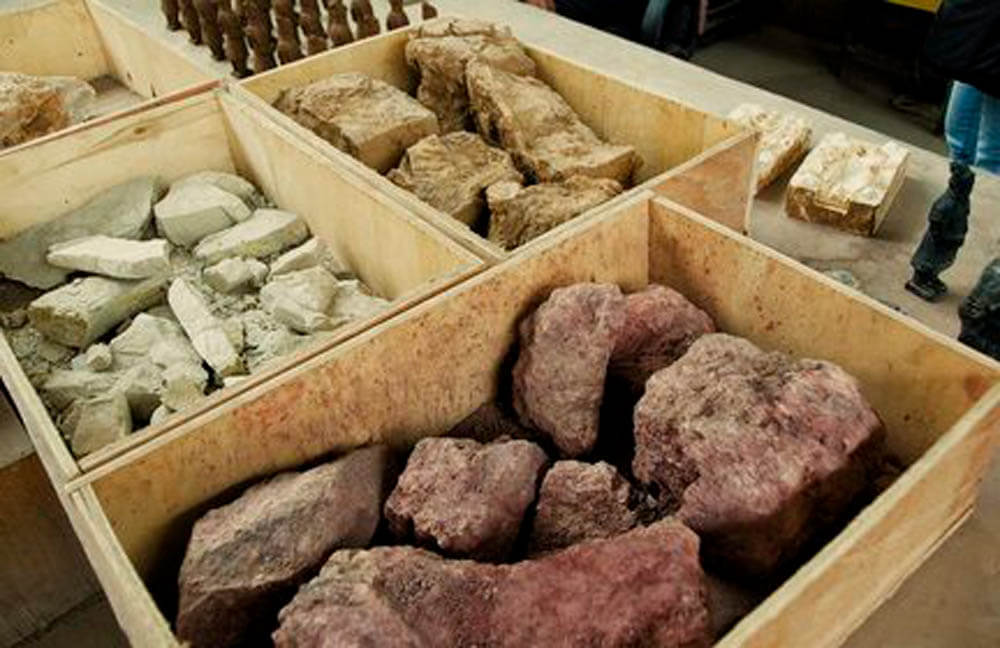
In addition, a small amount of white sand was added, which included quartz sand, mica, and feldspar – materials that enhance the mechanical properties of the sculpture and allow molding large figures easily.
How the Terracotta Army Warriors Were Made
Sculptors used mud to make a rough cast, which was later molded from bottom to top in sections. First, a footplate was made, which was molded in the form of a square, then feet, followed by legs and short pants. To highlight the muscles and bones and make the legs more realistic, sculptors resorted to detailed sculpting. Next, the upper part of the body was created by winding clay strips upwards. To strengthen the clay strips and make them tighter, artisans used sackcloth as a lining and chipped it from all the sides with the material until the strips acquired the needed shape and size.
Straight arms were molded into certain molds, while bent arms were made in separate pieces that were divided at the elbow area and then glued together. Hands were molded in the same way as straight arms were. After drying in the shade, sculptors attached hollow arms to the torso of the warrior and then inserted hands into them.
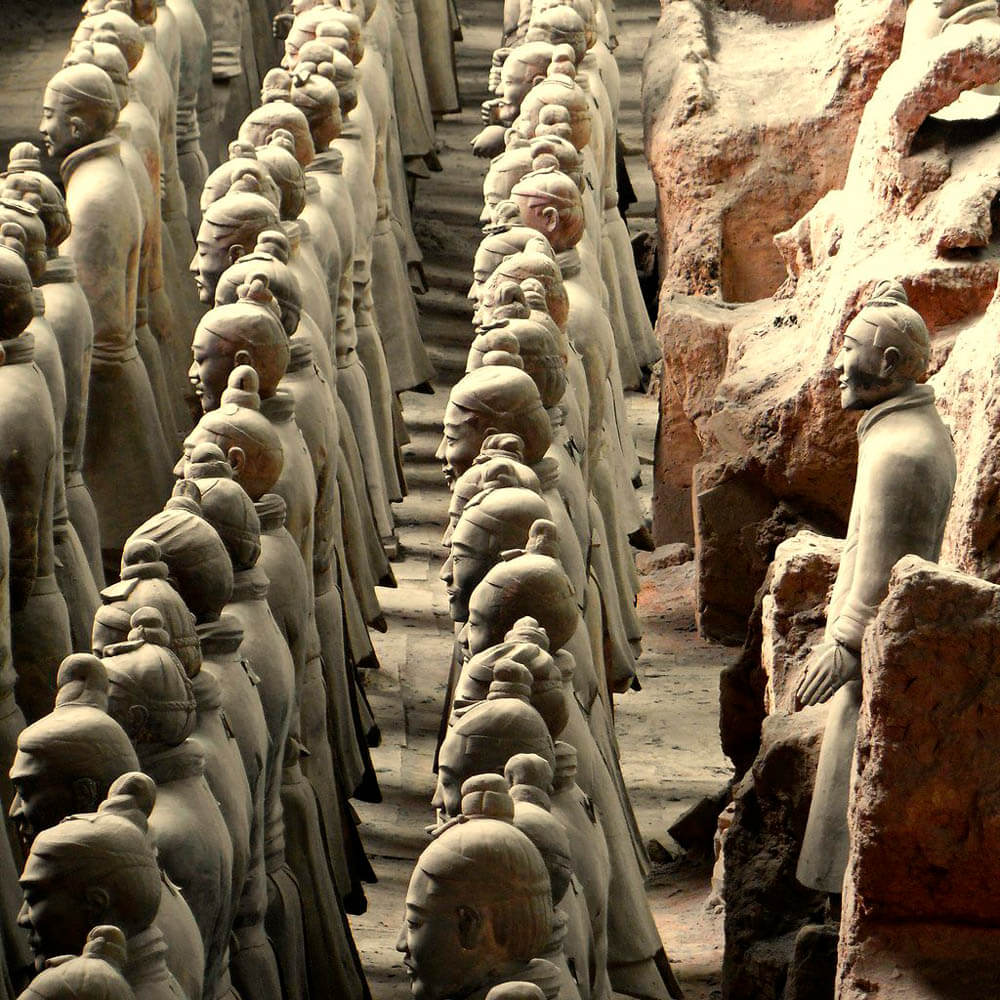
Head shaping was the most difficult task in the process of creating a terracotta army warrior. First, the front and back of the head were molded, then they were glued together, after which artisans applied several layers of mud in order to obtain different facial shapes.
With the help of carving, kneading, scraping, and inserting other elements, artisans consistently “constructed” eyes, eyebrows, noses, ears, mouths, hair buns, and hat decorations. Each figure had a distinctive face, and experts have confirmed that these features were the reproduction of individuality of each Qin warrior. The last step was to attach the head to the body.
Terracotta warriors are very realistic, and the reason for this is that ancient sculptors carefully carved molded body parts, and even arms, legs, and feet were made with great detail. Even their armor has little difference from the real ones.
After being formed, the figures of the warriors were fired in kilns, and sculptors left special holes in particular places of the figures for ventilation, for example, in the neck, so that the fire could evenly spread throughout the body’s cavity. During firing, sculptors paid special attention to the degree of heating, so the temperature of 1,000 degrees Celsius (1,830 Fahrenheit) was maintained.
In addition, after conducting a range of experiments, experts studying the terracotta army came to a conclusion that during the firing the figures were placed upside down due to the fact that their upper part was heavier than the bottom. This was done for the sculptures to be in a more stable and motionless position, and this proves that Chinese artisans mastered the principle of the center-of-gravity 2,000 years ago.
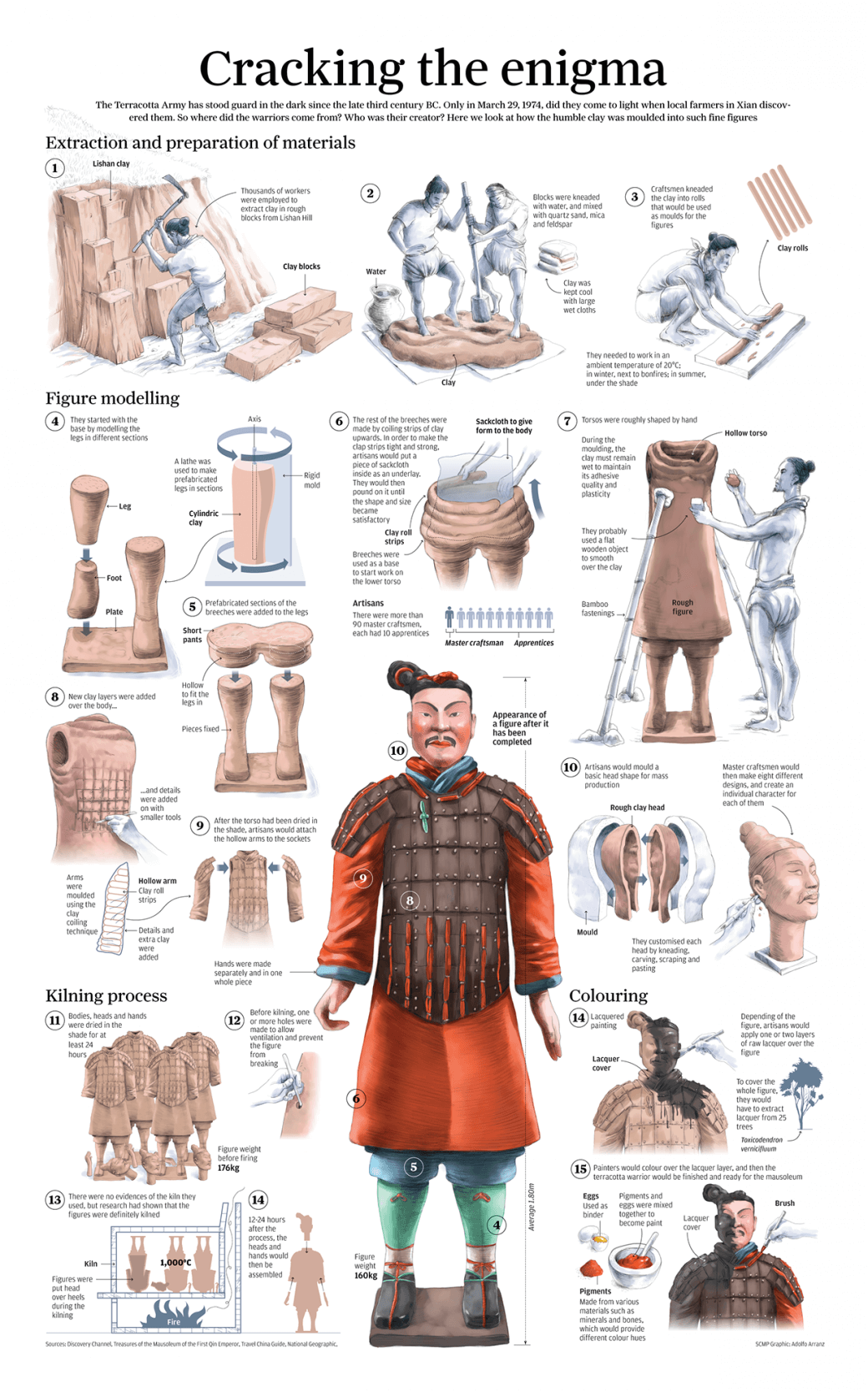
The process of making terracotta horses was generally the same. Their heads, necks, legs, bodies, and tails were made separately, and then glued together and covered with a second layer of mud. After detailed carving and decoration, they were put into kilns for firing and then painted.
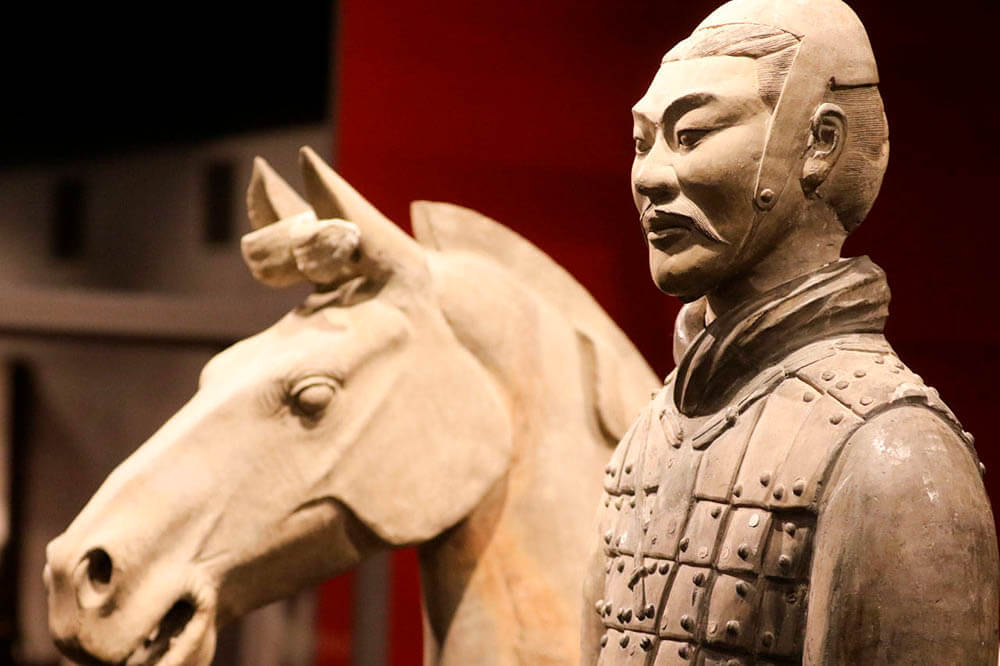
Colors
Today, the terracotta warriors of Chinese Emperor Qin are of dull gray-brown color, but archaeological studies have proved that once the army could mesmerize by their rave of color. In April 1999, during the excavation, six kneeling armored warriors were found, whose bodies preserved big sections of colorful painting paints. Unfortunately, little out of this colorful splendor has stood the test of time. When exposed to air, the lacquer on the warriors’ bodies instantly cracked and peeled off completely within 5 minutes.
However, the remnants of their colorful vestments indicate that Qin artisans carefully painted terracotta warriors after the firing to make this majestic army even more realistic. Nevertheless, during a long break between excavations, Chinese scientists, together with experts from the Bavarian State Administration for the Preservation of Cultural Monuments of Germany, found a way to save color with the help of polyethylene glycol. And now, when archaeologists discover a colored piece, they immediately spray it with polyethylene glycol solution and wrap it with a film to hold in the moisture.
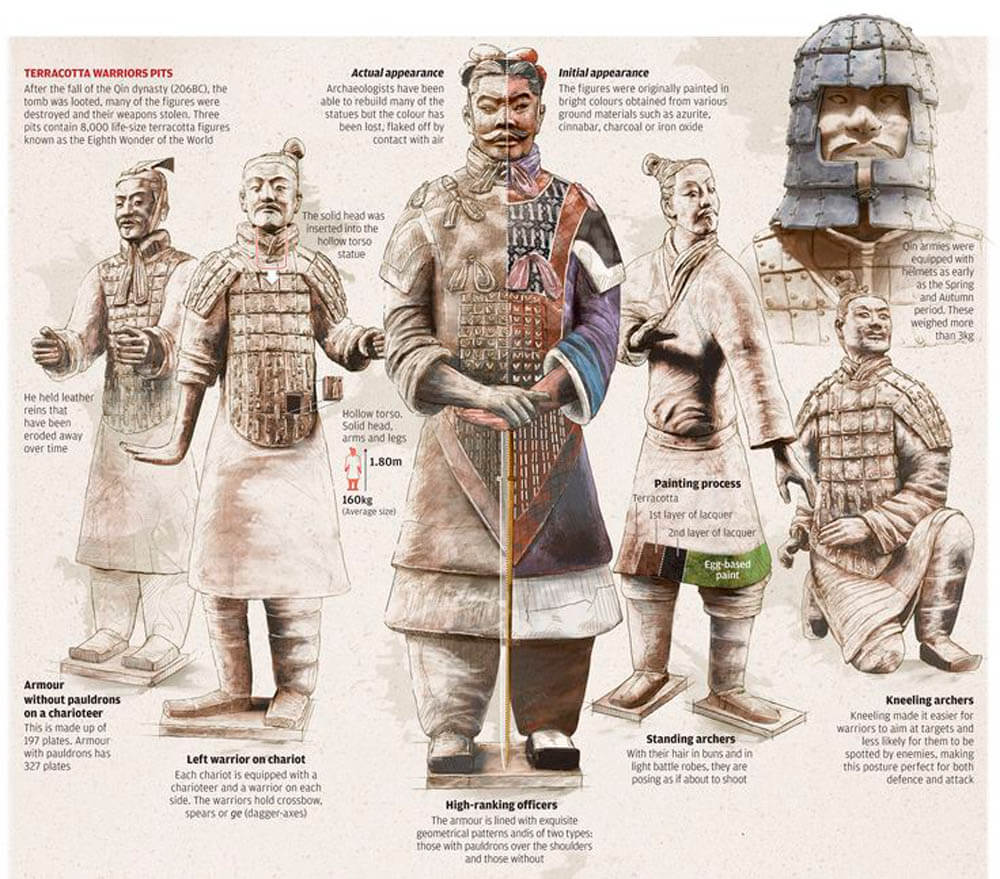
Over the past three years, experts have discovered more than a hundred sculptures, including partially painted ones. Some soldiers have pink faces, black hair, brown or black eyes. The best-preserved sculptures were located on the very bottom of the excavation site, and they were preserved by a layer of dirt. In addition, unearthed statues are often sent for analysis along with the surrounding soil, as many pieces are imprinted in the earth, leaving a layer of paint in it.
